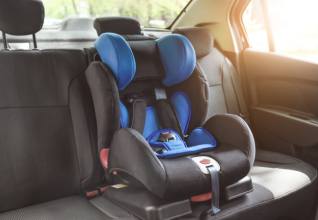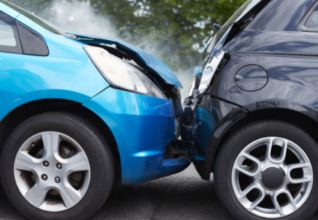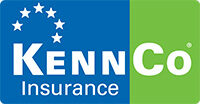Child safety when driving is the highest priority for each and every parent.
Children are some of the most vulnerable passengers on the road. According to data from the RSA, 68 children lost their lives on Irish roads between 2014 and 2023, with 980 more being injured during the same period.
In Ireland, there are strict laws for children travelling in cars and around the use of car seats to ensure child safety. Understanding these laws and regulations can significantly increase your child’s safety during travel and can save lives if followed correctly, and also guarantee compliance.
In our guide below, we’ll take a look at the most recent regulations and share some essential tips on car seat safety for parents and guardians.
Importance of Child Safety in Cars & On The Road
Child safety in cars goes beyond just following the law—it’s about protecting the most vulnerable passengers and road users.
According to data from the RSA, each year since 2014, at least three in five children killed or seriously injured were pedestrians or cyclists, while almost three in ten were passengers.
Additionally, the RSA found that children do not fully develop the judgement and perception needed to properly interact with traffic until they are roughly 12 years old. So it falls on adults and motorists to take precautions.
Understanding Car Seat Safety Laws in Ireland
Car seat safety laws in Ireland are specifically designed to protect children from birth through to their early teens. Here’s what you need to know about the regulations:
Key Legal Points:
- Mandatory Use of Child Restraints: Children under 150 cm tall must use an appropriate child restraint system.
- Types of Restraints: Depending on age, height, and weight, children must use either a rear-facing seat, forward-facing seat, or booster seat.
- Seatbelt Usage: All children must wear seatbelts, and booster seats should be used until the seatbelt fits correctly without assistance.
- Fines and Penalties: Non-compliance can result in hefty fines and penalty points on your licence
Age and Size Requirements
In Ireland, under regulations set by the RSA, all children under 150cm (approx. 4ft 11”) in height or 36kg (approx. 79 lbs) in weight must use a child car seat or child restraint system (CRS) that is appropriate for their weight while travelling in a car or goods vehicle other than a taxi.
Under these guidelines, car restraints for children are broadly categorised into groups designed to suit children of different ages as follows:
- Group 0+: Birth up to 13kg (about 12-15 months)
- Group 1: 9kg to 18kg (about 9 months to 4 years)
- Group 2 and 3: 15kg to 36kg (about 4 years to 12 years)

However, you’ll notice that all are grouped according to the weight, as it is the weight of the child that is the most important factor when choosing a car seat.
Types of Child Restraint Systems
Rear-Facing Seats:
Typically for children from birth up to at least 15 months or until they reach the seat’s height and weight limits.
Forward-Facing Seats:
For children who have outgrown rear-facing seats, usually from 15 months to around 4 years old.
Booster Seats:
For children between 4 and 12 years old or those who have reached 135 cm in height.
Seatbelts:
Children can use seatbelts alone once they are tall enough for the belt to fit properly, usually around 135 cm.
Safety Standards for Car Seats
As of 1st September 2024, child seats approved to Regulation R44 can no longer be sold by retailers, marketplaces, and e-commerce in the EU. All new child car seats sold by retailers must now meet a newer, more rigorous safety standard known as R129, which is often referred to as i-Size and replaces the older R44 standard.
The new R129 standard was introduced to make car seats even safer. Car seats that have been approved to R129 standard provide better head and neck protection, and have gone through more rigorous testing (including side impact testing) compared to the older R44 standard. Additionally, the regulation keeps children in the rear-facing position up to a minimum of 15 months, instead of the current 9 months, which offers better protection for babies and toddlers.
It is important for parents to know that while retailers can no longer sell the older R44 seats, it is still perfectly legal to continue using an R44 seat you already own, as long as it is in good condition and suitable for your child.
Correct Installation Is Key
Research by the RSA suggests that 4 out of 5 car seats are not installed properly, which can reduce their effectiveness and lead to serious injury or fatalities in the event of a collision. In 2024, statistics from the RSA’s ‘Check It Fits revealed that:
- 54% of seats checked in 2024 fitted incorrectly, and posing serious risk in a crash
- 20% of seats checked needed major adjustments due to safety-critical issues like seatbelt misrouting or excessive looseness
- 34 seats were found not fit for purpose at all, due to broken parts, missing components, or not meeting EU regulations.
Always choose a retailer that can either install your child’s car seat for you, or show you how to correctly fit it yourself. You should always refer to the manufacturer’s instructions if installing yourself or, if you are unsure, seek professional help to make sure that your car seat is fitted correctly.
The RSA provides a free, full-time service where parents and guardians can check that their car seat is fitted correctly and safely. This service, Check It Fits, is available nationwide and has checked over 67,000 car seats since 2013. No booking is necessary; locations and dates can be found on the RSA website.
Direction of the Car Seat
A rear-facing car seat is recommended for infants and should be used until your child is at least 15 months old. After this, you can switch to a forward-facing car seat but keeping a rear-facing position up to at least four years of age is advisable since it offers better protection for little heads and necks.
Transitioning Between Seats
Transitioning from one stage of the car seat to another should be based on your child’s height and weight rather than age. It’s safer to keep a child in a lower group seat for as long as possible to get the most protection.
The RSA recommends that you only move your child out of a rearward-facing car seat when their eye level is in line with the top of the seat, or they have gone above the maximum weight limit set out by the manufacturer.

Booster Seats
Booster seats are necessary until a child is tall enough (150cm/4ft 11”) to safely use an adult car seat belt. As a rough guide, this means until your child is around 12 years old but always be based around weight, rather than age.
Booster seats help to position the child correctly so a seat belt can be positioned correctly on their shoulder and pelvis. The RSA recommends choosing a booster seat that gives the most protection possible to a child’s head, neck and spine.
Seatbelt Safety for Kids
Once your child has outgrown their booster seat, they can use seatbelts like adult passengers. As with car seats, it’s important to make sure that all seat belts are secured correctly to keep child passengers safe in the event of an accident.
Seatbelt Tips:
- Proper Fit: The lap belt should lie snugly across the upper thighs, not the stomach. The shoulder belt should cross the chest and shoulder, not the neck or face.
- Avoid Twists: Ensure the seatbelt is not twisted, which can cause discomfort and reduce its effectiveness.
- Seat Positioning: Children should sit in the back seat until they are at least 13 years old for maximum safety.
- Belt Adjusters: Use belt adjusters if necessary to achieve the correct fit without compromising comfort.
Car Seat Safety Tips
Choose the Right Car Seat
Always choose a car seat based on your child’s current height and weight, not something that they will grow into. Check that the car seat fits in your car properly and that it meets all EU safety standards (look for the E mark label).
Look For Reputable Brands
When choosing a car seat, look out for brands who are trusted and who have a proven track record for producing safe and reliable products.
Positioning the Car Seat
The safest place to install a car seat is typically in the back seat of the car, away from active airbags. If you do need to use the front seat, make sure that the passenger side airbag is deactivated as it can cause serious injuries in the event of a collision.
Airbags
It is illegal to position a rear-facing child seat in the front passenger seat with an active airbag. Drivers found to be in breach of this are liable to receive at least 3 penalty points on their driving licence.
Securing Your Child
The harness of a child seat should fit snugly around your child; you shouldn’t be able to pinch any excess webbing after buckling the harness. The harness chest clip should be at armpit level to reduce choking hazards. Always check that the straps are at the correct heights and be wary of clothing or blankets which can affect the tightness.
Regular Checks
Regularly check if your child’s car seat is installed correctly and look out for any signs of wear and tear, damage or loose components before travelling.
Avoid Second-Hand Seats
If you can, try to always opt for a new car seat that meets all of the current safety standards. Second-hand car seats might have been involved in an accident and could be less effective, or could possibly be an older model which does not meet R129 regulation safety standards, and may be less safe and no longer legal to use.
Compatibility
Check that the car seat is compatible with your vehicle. Not all seats will fit all car models so make sure you do your research for your specific car model.
Understanding and complying with car seat laws in Ireland is crucial for the safety of your children. Always ensure that the car seat is suitable for your child’s size, correctly installed, and appropriately used every time you travel.
Dealing With Problem Car Seat Behaviours
A lot of children go through phases where they slip out of the car seat restraints or safety belt, release the buckle while driving or incorrectly adjust straps or belts by themselves. This can often lead to dangerous or distracting situations for parents while driving.
Problem behaviour like this is often a sign that the child restraints are incorrectly adjusted or uncomfortable, causing your child to push the straps off or try to release the buckle. The Road Safety Authority that drivers travelling with children check that the child is comfortable and that the safety harness or seatbelt is adjusted correctly, and in line with the manufacturer’s guidelines, before setting out.
Leaving Children Unattended in Cars
Leaving a child alone in a vehicle, even for a moment, can be extremely dangerous. Infants and young children should never left unattended as a variety of hazards can occur in the short time you are away, such as:
- Breathing problems on hot days
- Accidental trapping of a child in electronic windows
- Leaving your keys in the car when you are not in it
- Unexpected fires
Final Word on Child Car Safety
Making sure your child is correctly restrained in your car is the single most important safety action you can take as a parent, and as a driver. This means being aware of the laws and guidance, choosing the right seat for your child and making sure it is properly fitted.
If you have any doubt whatsoever about your car seat, we strongly encourage all parents and guardians to use the RSA’s free ‘Check it Fits‘ service to ensure their child is travelling as safely as possible.
And for reliable and trusted car insurance, contact KennCo on 01 409 2600 today, or visit our website for a fast, secure online quote.
Child Car Seat Safety FAQs
Looking to Save On Your Car Insurance?
At KennCo, our car insurance cover offers competitive rates and valuable benefits, including a replacement car as standard. Get peace of mind knowing you’re fully covered.
Get a Secure Quote Today
